The year 2025 marks the 100th anniversary of the Wilmer Eye Institute, Johns Hopkins University and the 60th anniversary of the Zhongshan Ophthalmic Center (ZOC), Sun Yat-sen University. On Jan 11, Prof. Haotian Lin, director of ZOC, visited the Wilmer Eye Institute as the only invited Chinese scholar.
AI, a strategic force in technological innovation, is reshaping the medical field with unprecedented opportunities and challenges. ZOC pioneers transformative AI and big data applications, delivering China's insights to tackle global eye health challenges.
During the visit, Prof. Lin delivered a compelling keynote lecture titled “AI Revolution in Retina”. In his speech, he stated that, artificial intelligence marks a significant breakthrough in addressing current challenges in prevention and treatment of eye diseases, as well as promoting visual health. He emphasized the importance of technological innovation and joint efforts among global ophthalmology centers, in effectively addressing the eye health challenges faced by the people.
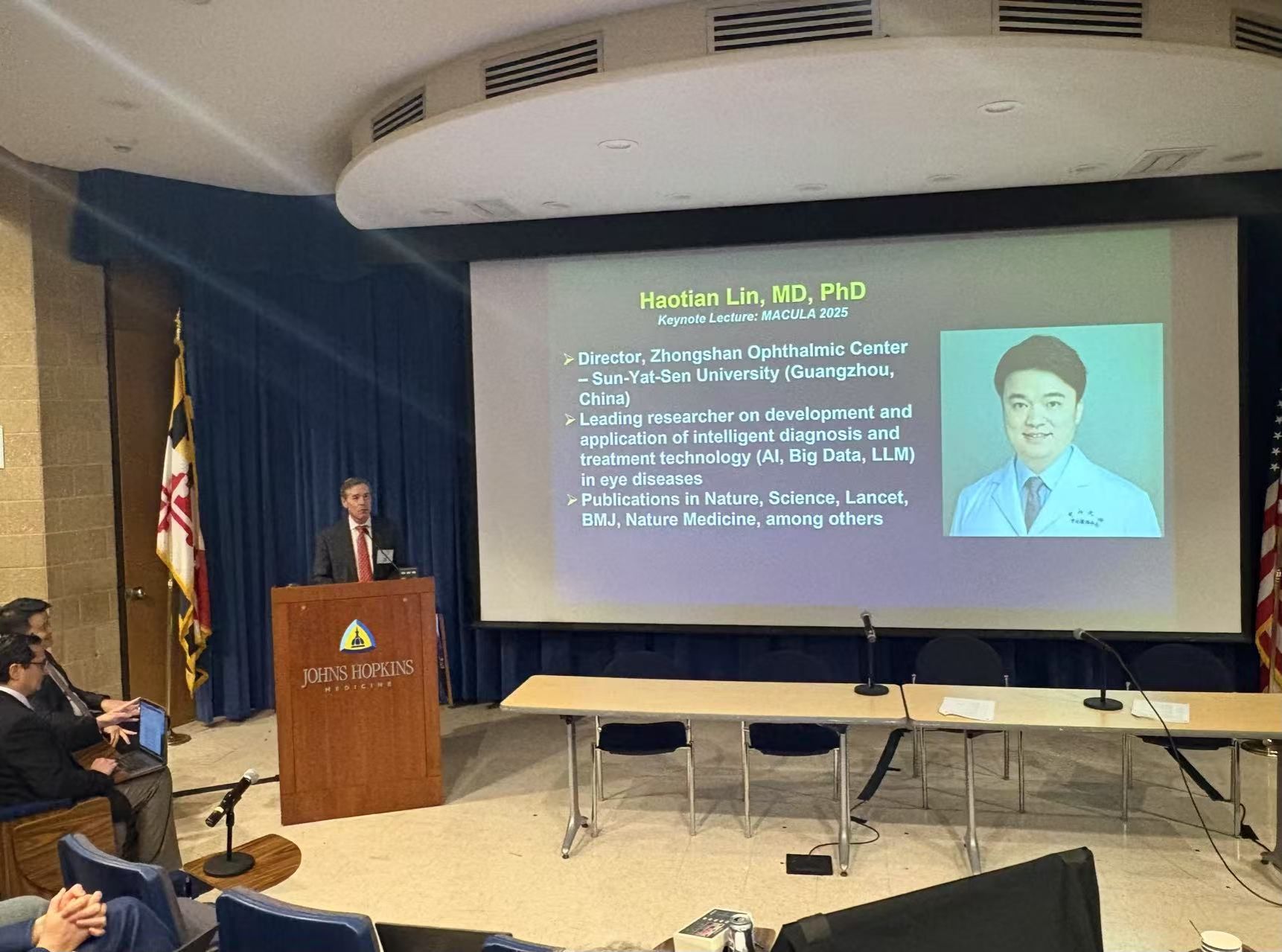

Prof. Haotian Lin is delivering a keynote lecture on AI revolution in retina.
Prof. Lin demonstrated ZOC's pioneering innovations in AI-powered ophthalmology solutions during the keynote address. Over the past few years, the center has engaged in global collaboration to tackle issues such as the shortage and uneven distribution of medical resources through these AI-powered innovations, which have revolutionized vision care delivery in remote and underserved areas, garnering widespread acclaim from global medical authorities for their clinical efficacy.
During the visit, the two institutions have reached preliminary cooperation intentions, including plans for ZOC and the Wilmer Eye Institute to co-host an international symposium on AI-driven eye disease prevention and treatment at the Annual Meeting of the Association for Research in Vision & Ophthalmology (ARVO 2025) in May.
In addition, Prof. Lin met with alumni from ZOC and Chinese students currently studying and working at the Wilmer Eye Institute. He encouraged everyone to participate in the China-US ophthalmology cooperation and exchange programs.
ZOC, the largest public ophthalmic institution in China, and Wilmer Eye Institute, the largest ophthalmic institution in the United States, have a longstanding history of collaboration and exchange. Prof. Yaozhen Chen (Eugene Chan), one of the founders of modern Chinese ophthalmology and the founder of ZOC, was the first Chinese researcher at Wilmer Eye Institute. In the 1930s, with the vision of establishing a world-class ophthalmic center, he repatriated to China. And in 1965, Prof.Yaozhen Chen and Prof. Wenshu Mao (Winifred Mao) established the ZOC, which marked a significant milestone in the development of modern ophthalmology in China, and that promoted international academic exchanges and collaboration in ophthalmology.
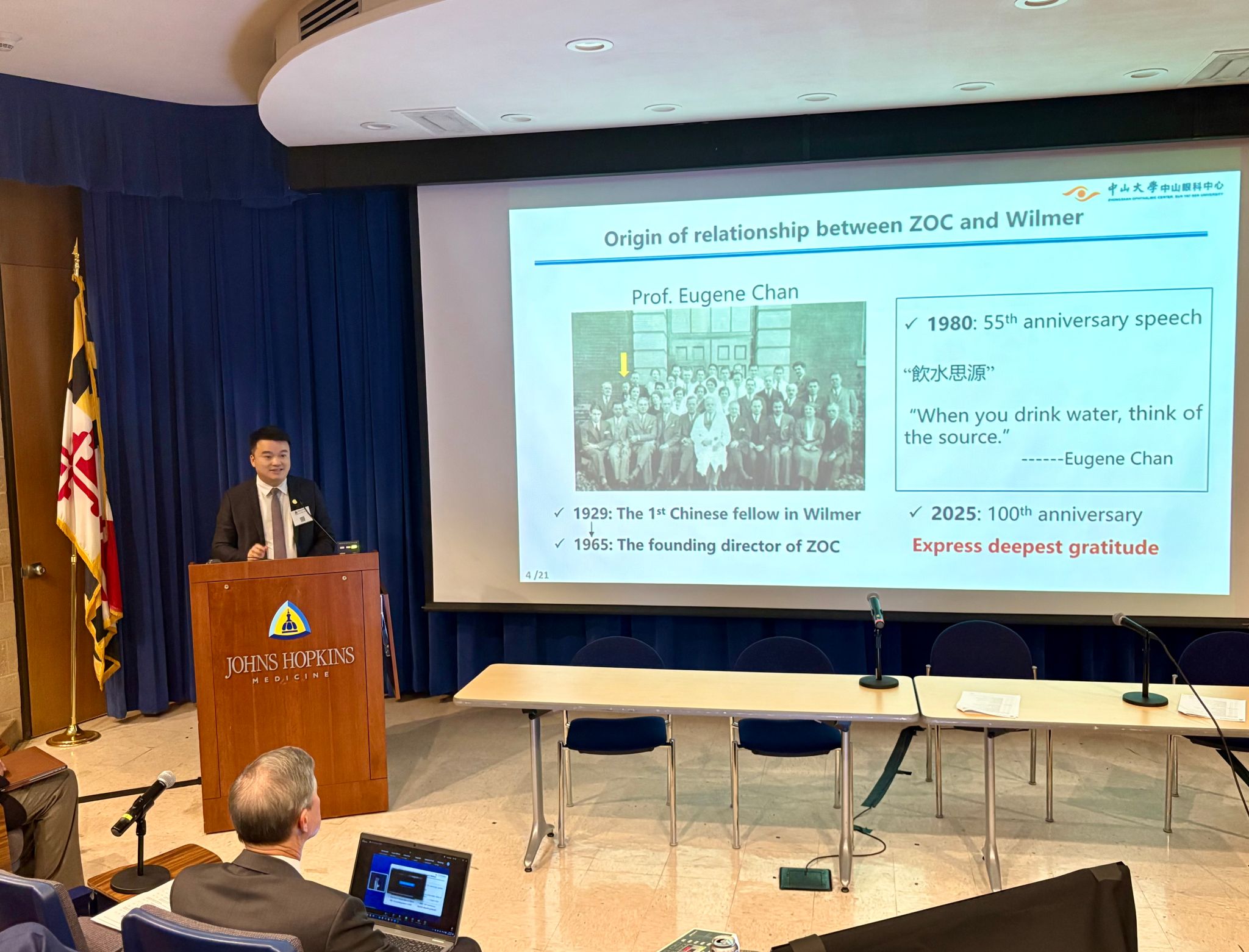
Prof. Haotian Lin highlights the century-spanning collaboration between Zhongshan Ophthalmic Center (ZOC) and Wilmer Eye Institute during the lecture.
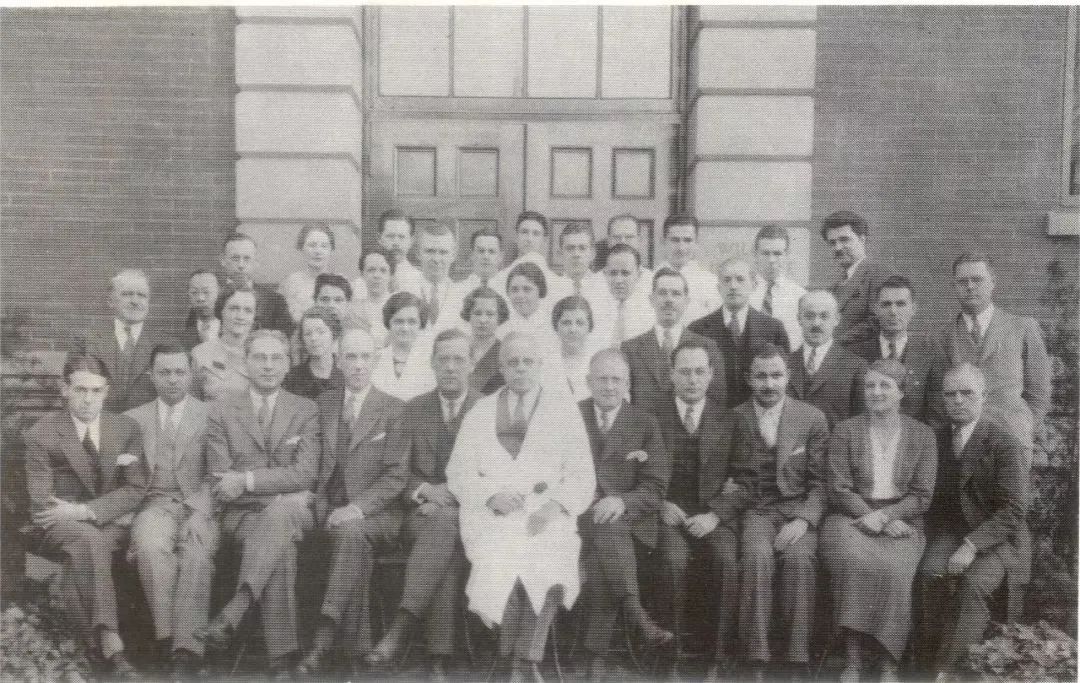
A staff photo of the Wilmer Eye Institute taken in 1932, featuring Prof. Yaozhen Chen (third row, first left).
In 1982, at the invitation of Professors Yaozhen Chen and Wenshu Mao, Dr. David Paton from the Wilmer Eye Institute led the ORBIS Flying Eye Hospital on its inaugural flight to Guangzhou, China.
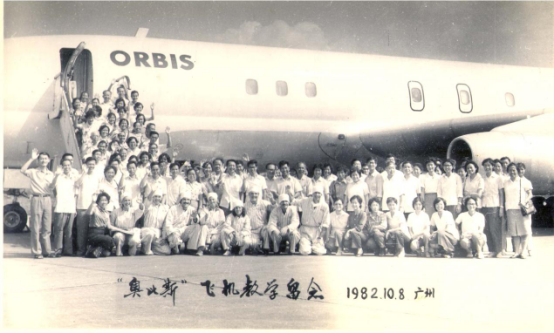
A group photo captures specialists from ORBIS Flying Eye Hospital and Chinese ophthalmologists during its inaugural flight to Guangzhou in 1982.
In 1985, the first global ophthalmology conference in China was held in Guangzhou, where scholars from the Wilmer Eye Institute presented the latest advancements in the field.
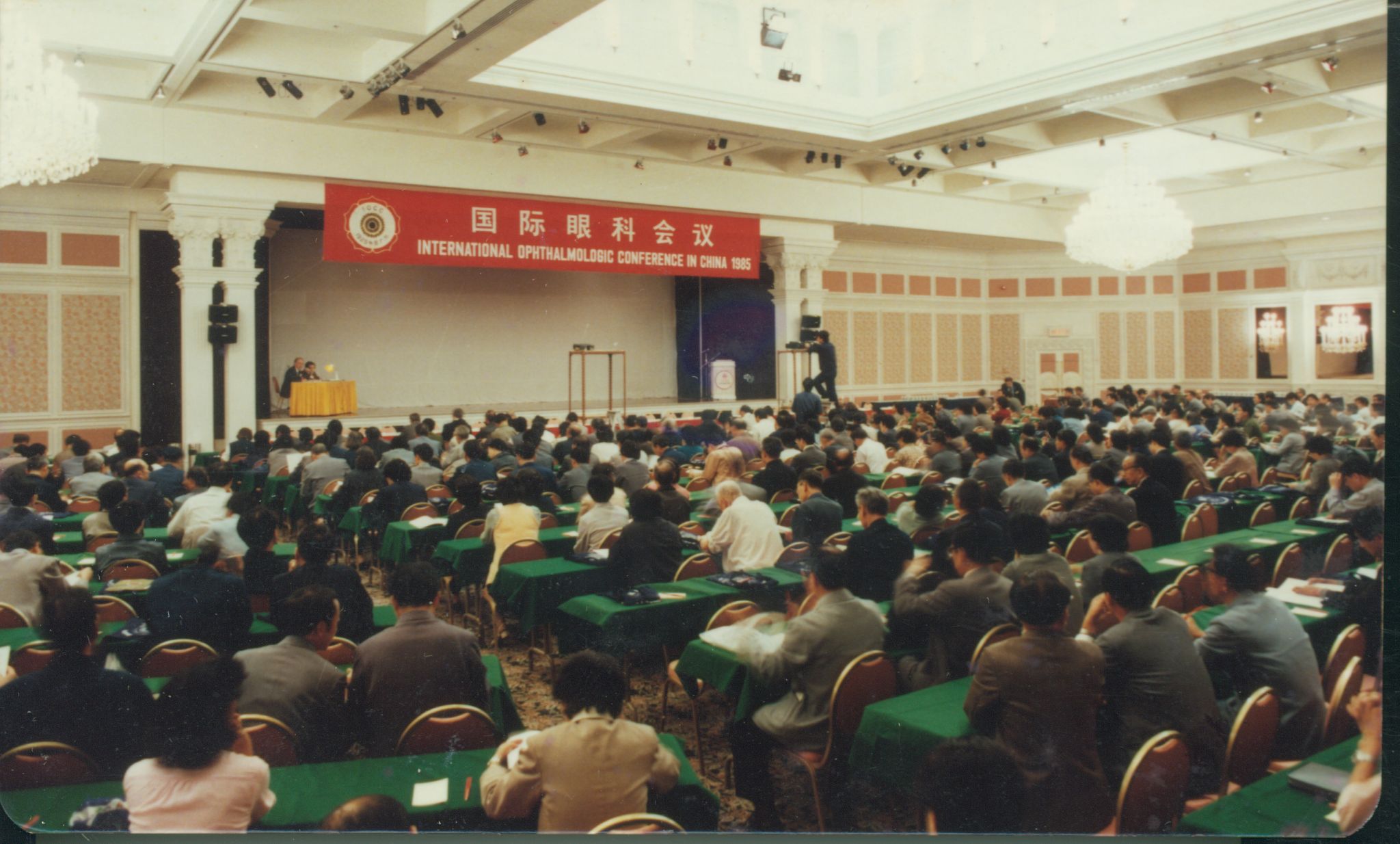
The first global ophthalmology conference in China
For decades, ZOC and the Wilmer Eye Institute have maintained a robust collaborative partnership, jointly nurturing a multitude of alumni and fostering a profound camaraderie.
In celebration of the 60th anniversary of ZOC, Prof. Haotian Lin’s visit to the Wilmer Eye Institute, is the first stop of its series of international exchange activities.
Currently serving as the sole WHO Collaborating Center for Eye Health and Vision in China , ZOC hosts the headquarters of the Asia Pacific Academy of Ophthalmology (APAO) and the Asia-Africa Eye Care Organization (AAECO).

Through sustained innovation in therapeutic approaches and international collaboration, ZOC has achieved a series of milestones cementing its global prominence. According to the latest Nature Index rankings, ZOC has secured the No.1 position globally among all ophthalmology institutions in Health Sciences and Life Sciences.
In recent years, the center has made groundbreaking advances in refractory eye diseases, stem cell applications, myopia control, AI in ophthalmology, glaucoma prevention, ocular tumors, and new drug development. Numerous original research findings published in Cell, JAMA, BMJ, and Nature Medicine have gained worldwide recognition.
As a pioneer in China's ophthalmic field, ZOC vows to strengthen the longstanding China-US collaboration in ophthalmology, advancing global efforts in safeguarding vision for humanity.



